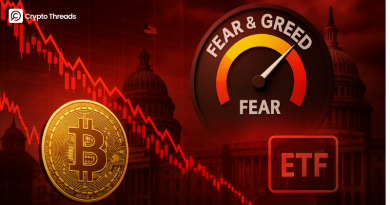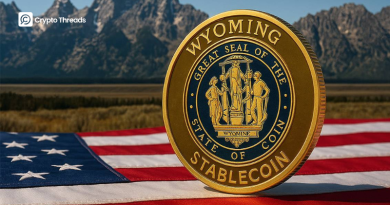What is the SEC? Complete Guide to Securities and Exchange Commission for Crypto Investors
Understanding the SEC: Your Gateway to Safe Crypto Investing
The Securities and Exchange Commission, commonly known as the SEC, serves as America’s financial watchdog and represents one of the most influential regulatory bodies affecting cryptocurrency markets worldwide. For newcomers to crypto investing, understanding the SEC is like learning traffic rules before driving – you need to know the regulations to navigate safely and avoid costly mistakes.
Think of the SEC as the referee in a massive financial game, ensuring everyone plays by the same rules and preventing fraud that could hurt everyday investors. The agency operates on three foundational pillars: protecting investors, maintaining fair and efficient markets, and facilitating capital formation. Each pillar works together like the legs of a three-legged stool – remove one, and the entire system becomes unstable.
When the SEC makes announcements about cryptocurrency regulations or enforcement actions, these decisions can dramatically impact token prices, sometimes causing swings of 10-20% in a single day. This makes understanding SEC policies crucial for anyone serious about crypto investing.
Historical Foundation: Learning from Financial Crisis
The SEC emerged from one of America’s darkest financial periods. Established in 1934 following the devastating Great Depression, the agency was Congress’s response to the 1929 stock market crash that wiped out millions of investors’ savings. Before the SEC’s creation, financial markets resembled the “Wild West” – largely unregulated territories where fraud and manipulation ran rampant.
The catastrophic market collapse taught policymakers a critical lesson: without proper oversight, financial innovation can quickly transform from opportunity into disaster. This historical context explains why the SEC approaches new financial products, including cryptocurrencies, with considerable caution. The agency learned that protecting investors often requires slowing down innovation to ensure adequate safeguards exist.
Understanding this historical perspective helps explain the SEC’s sometimes conservative stance toward cryptocurrency. The agency doesn’t oppose innovation, but it prioritizes investor protection based on decades of experience with financial market volatility and fraud.
SEC Organizational Structure and Operations
To comprehend how the SEC influences crypto markets, imagine the agency as a multi-story building where each floor serves a specific regulatory function. At the top level, leadership consists of up to five commissioners appointed by the President, with a crucial requirement that no more than three can belong to the same political party. This bipartisan structure ensures balanced decision-making and prevents extreme regulatory swings.
The agency’s specialized divisions operate like different departments in a comprehensive financial oversight system. The Enforcement Division functions as financial detectives, investigating potential securities law violations and pursuing legal action against bad actors. The Division of Corporation Finance ensures companies provide accurate, complete information to investors, similar to requiring restaurants to display health grades and ingredient lists.
The Division of Trading and Markets oversees exchanges and broker-dealers, ensuring fair trading practices and market integrity. Meanwhile, the Division of Investment Management regulates investment companies and advisers, protecting investors from fraudulent schemes and unsuitable recommendations.
Each division plays a crucial role in the broader regulatory ecosystem, and their coordination determines how effectively the SEC can adapt to emerging technologies like blockchain and digital assets.
Three Core Missions Explained
The SEC’s investor protection mission extends far beyond simple fraud prevention. The agency requires companies to disclose material information that could affect investment decisions, ensuring you receive accurate data before committing your money. Think of this like requiring car manufacturers to publish safety ratings and fuel efficiency data – you deserve to know what you’re buying.
This protection becomes especially important in cryptocurrency markets, where technical complexity can obscure risks from average investors. When the SEC investigates crypto projects, they’re examining whether companies provide sufficient information for informed decision-making and whether they’re making misleading claims about potential returns.
Market fairness represents the SEC’s second pillar, ensuring no participant receives unfair advantages over others. In traditional markets, this means preventing insider trading and market manipulation. In crypto markets, this extends to examining whether exchange operators trade against their own customers or whether large holders coordinate to manipulate prices.
The capital formation mission focuses on helping legitimate businesses raise money while protecting investors from fraud. The SEC creates “safe harbors” – legal pathways that allow companies to raise capital without running afoul of securities laws. For crypto projects, this mission becomes crucial as many tokens represent new ways of funding business development.
SEC’s Evolving Cryptocurrency Stance
The relationship between the SEC and cryptocurrency represents one of the most dynamic regulatory stories in modern finance. The central question driving most SEC crypto policy revolves around a deceptively simple issue: which cryptocurrencies qualify as securities under existing law?
This determination carries enormous consequences. Securities must comply with extensive registration requirements, periodic reporting obligations, and strict disclosure rules. Non-securities face much lighter regulatory burdens. The difference can determine whether a crypto project thrives in the United States or relocates to more favorable jurisdictions.
The SEC applies the Howey Test, established by a 1946 Supreme Court case, to determine security status. This test examines whether an investment involves money invested in a common enterprise with expectations of profit derived from others’ efforts. While this framework worked well for traditional investments, applying it to decentralized blockchain networks creates significant complexity and controversy.
Different crypto assets present varying challenges under this framework. Bitcoin and Ethereum have generally been treated as commodities rather than securities, partly because their networks operate in a sufficiently decentralized manner. However, many newer tokens involve centralized development teams and active marketing efforts that could trigger securities classification.
Dramatic Policy Shifts: Gensler vs. Atkins Era
The transition from Gary Gensler to Paul Atkins as SEC Chairman represents one of the most dramatic regulatory policy reversals in recent financial history. Understanding these differences helps predict future market movements and regulatory trends.
Under Chairman Gary Gensler (2021-2025), the SEC adopted what critics called “regulation by enforcement.” Rather than establishing clear rules upfront, the agency pursued legal action against crypto companies and used court outcomes to define regulatory boundaries. This approach created significant uncertainty for crypto businesses and investors.
Gensler’s SEC brought 125 cryptocurrency-related enforcement actions during his tenure, representing an 80% increase compared to his predecessor. The agency collected $6.05 billion in monetary penalties, nearly four times the amount recovered under previous leadership. Major enforcement actions included lawsuits against Coinbase and Binance in June 2023, alleging these exchanges operated as unregistered securities platforms while trading tokens like Solana, Cardano, and Polygon.
The Kraken enforcement action exemplified Gensler’s approach. The SEC imposed a $30 million penalty on the exchange and forced it to discontinue staking services for U.S. customers, arguing these services constituted unregistered securities offerings. This action sent shockwaves through the industry, as staking represents a fundamental aspect of many blockchain networks.
Under Chairman Paul Atkins (2025-present), the SEC has adopted a dramatically different philosophy. Within weeks of taking office, Atkins began dismissing numerous enforcement actions, including high-profile cases against Coinbase, Kraken, and other major crypto companies. The agency announced it would pursue “notice and comment rulemaking” rather than enforcement-driven policy development.
Atkins established a Crypto Task Force led by Commissioner Hester Peirce to develop comprehensive digital asset regulations. This task force aims to create clear regulatory frameworks for crypto asset issuance, custody, and trading. The new approach prioritizes industry engagement and transparent rule development over surprise enforcement actions.
The philosophical difference extends beyond enforcement tactics. Where Gensler viewed most cryptocurrencies as securities requiring strict regulation, Atkins advocates for tailored regulations that acknowledge the unique characteristics of digital assets while maintaining appropriate investor protections.
Historic Bitcoin ETF Approval: A Regulatory Breakthrough
January 2024 marked a watershed moment when the SEC approved spot Bitcoin Exchange-Traded Funds after more than a decade of rejections. This approval represented a significant shift in the agency’s stance toward cryptocurrency and opened institutional investment channels that previously remained closed.
The path to approval illustrates how regulatory change often requires external pressure. The Winklevoss twins first filed for a Bitcoin ETF in 2013, facing repeated rejections based on concerns about market manipulation and inadequate investor protections. The breakthrough came following a federal court ruling in summer 2023 that forced the SEC to reconsider its inconsistent treatment of spot Bitcoin ETFs versus Bitcoin futures ETFs.
Grayscale Investments played a crucial role in this legal victory. The company argued that the SEC applied different standards to similar products without adequate justification. The court agreed, finding that Bitcoin spot and futures markets shared sufficient correlation and oversight mechanisms to warrant similar regulatory treatment.
The approval of eleven Bitcoin ETFs from major financial institutions like BlackRock and Fidelity brought immediate legitimacy to cryptocurrency investing. These funds attracted billions of dollars in assets within months, demonstrating enormous pent-up institutional demand for regulated crypto exposure.
However, then-Chairman Gensler emphasized that ETF approval didn’t constitute an endorsement of Bitcoin itself. The SEC approved these products as investment vehicles while maintaining its cautious stance toward the underlying cryptocurrency market.
Practical Implications for Crypto Investors
Understanding SEC policy helps you make more informed investment decisions and avoid regulatory risks that could impact your portfolio. When the SEC announces new enforcement actions or policy changes, these developments often trigger immediate market reactions that savvy investors can anticipate.
Consider how Bitcoin’s price surged past $100,000 following Trump’s election victory in November 2024. This wasn’t merely optimism about crypto-friendly policies – markets were pricing in specific regulatory changes that would make crypto investing easier and more accessible for institutional investors.
The ongoing regulatory uncertainty means you should prioritize exchanges and crypto services that maintain strong compliance programs. Platforms that proactively work with regulators are less likely to face sudden enforcement actions that could freeze your assets or limit your trading options.
Stay informed about SEC announcements, especially those involving enforcement actions against major exchanges or new guidance about token classifications. These developments can create both risks and opportunities, but only if you understand their implications quickly enough to respond appropriately.
Regulatory Evolution
The SEC’s approach to cryptocurrency continues evolving as technology advances and market dynamics change. Chairman Atkins has indicated plans to develop comprehensive crypto regulations that provide clarity while fostering innovation. This regulatory framework could significantly impact which crypto projects succeed in the United States and how institutional investors approach digital asset allocation.
Congress also plays an important role in shaping crypto regulation, with various bills pending that could establish clearer legal frameworks for different types of digital assets. The interaction between SEC rulemaking and Congressional legislation will determine the long-term regulatory environment for cryptocurrency in America.
International coordination adds another layer of complexity. As other countries develop their own crypto regulations, the SEC must balance maintaining U.S. market leadership with ensuring adequate investor protections. This balancing act will influence which crypto innovations flourish and which face regulatory obstacles.
The agency’s staff reductions and budget constraints under the Trump administration may also affect its regulatory capacity. A smaller SEC might focus on the most egregious violations while providing more flexibility for compliant crypto businesses to operate and innovate.
For investors, this evolving landscape means staying informed remains crucial. Regulatory changes can create significant market movements, but they also establish the foundation for long-term crypto market development. Understanding these dynamics helps you position your investments to benefit from regulatory clarity while avoiding unnecessary risks from non-compliant platforms or projects.
Remember that while regulations might seem restrictive, they ultimately serve to protect investors and legitimize cryptocurrency as an asset class. The SEC’s involvement, despite short-term market volatility, generally leads to more stable and trustworthy crypto markets that can attract broader institutional participation.



